The latest Walking and Cycling Index revealed that walking in Edinburgh prevents 1,067 serious long-term health conditions every year. The health benefits are clear, but is walking as accessible to all as we may think? In this blog, an Edinburgh resident explains the realities of walking in the city.
What is the Walking and Cycling Index, and what does it mean for Edinburgh?
The Walking and Cycling Index is the biggest assessment of walking, wheeling and cycling in urban areas in the UK and Ireland. In Scotland, the Index is delivered by Sustrans in collaboration with eight cities. Each city reports on the progress made towards making walking, wheeling and cycling more attractive, everyday ways to travel.
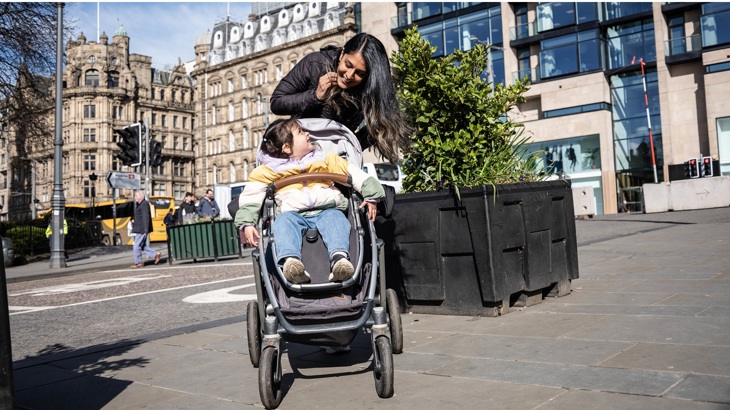
This year marked publication of the fifth report for Edinburgh. Credit: Brian Sweeney/Sustrans
The Index reports every two years. This is the fifth report from Edinburgh produced in partnership with the City of Edinburgh Council. The data in this report comes from 2023 and includes local walking, wheeling and cycling data, modelling and an independent survey of 1,233 residents aged 16 or above in the city.
The Index found that, in Edinburgh, 66% of residents walk or wheel five days a week, and that 22% of residents cycle at least once a week.
Overall in the city, 21% of residents want to drive less, yet 28% of residents often use a car because no other transport options are available. And in terms of funding, 57% of residents would like to see more government spending in the area on walking and wheeling.
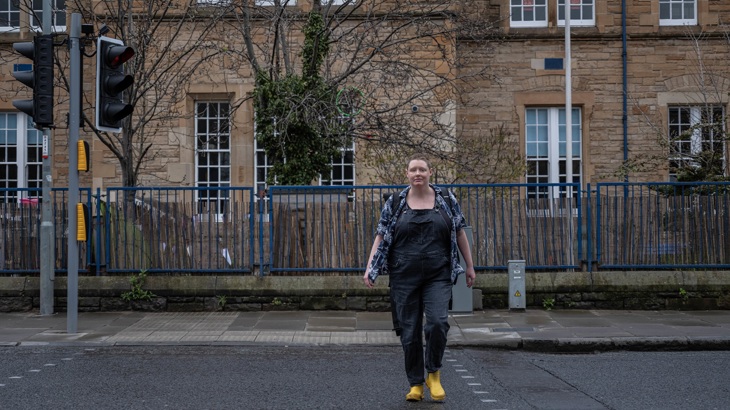
Edinburgh resident Annie is pictured crossing a road in the city. Credit: Brian Sweeney/Sustrans
Hi Annie, why is walking important to you?
I walk probably most days; it is very much my favourite mode of transport. I am visually impaired so I can't drive so walking combined with buses is my main way of getting about. But I also really like walking because I like being outside seeing what's going on and just enjoying the city. Walking allows me to explore places that I wouldn't otherwise maybe haven't noticed.
It also helps me be involved in my community. I find that when I do need to be driven around, I don't enjoy this experience as much. I don't feel as healthy and happy I guess, in my brain and my body. I don't feel like I get to experience things. It is maybe partly because I can't see very well when I am a passenger in a car so I can't really experience where I am going through as much. Whereas if I am walking, I get to fully be immersed, and it is lovely!
As my main mode of transport, walking lets me access most places that I need to get to on a day-to-day basis. Occasionally, I need to get a bus or a taxi or something to get to the odd place, but I can walk to the shops, the doctor’s surgery and places that I am going to go socially. It allows me to be fully independent. There is nothing wrong in relying on other people, but I don't like it when it can be avoided. I am a bit of a control freak, so walking allows me to be fully in charge of my own schedule!
According to the latest Walking and Cycling Index, 70% of residents think the level of safety for walking or wheeling in Edinburgh is good. How safe do you feel walking in the city?
In general, Edinburgh is a safe city to walk in most places. In my local area though, I do come across some issues, particularly at night as our street lighting isn't great. If I'm walking on my own, I might find myself walking in the road because the pavements are very narrow and completely dark. I can't see obstructions on the pavements, I can't see potholes, dog poo, things like that. I once fell down a hole when I was walking down my street in the dark. From a personal safety point of view, walking in well-lit areas feels much safer.
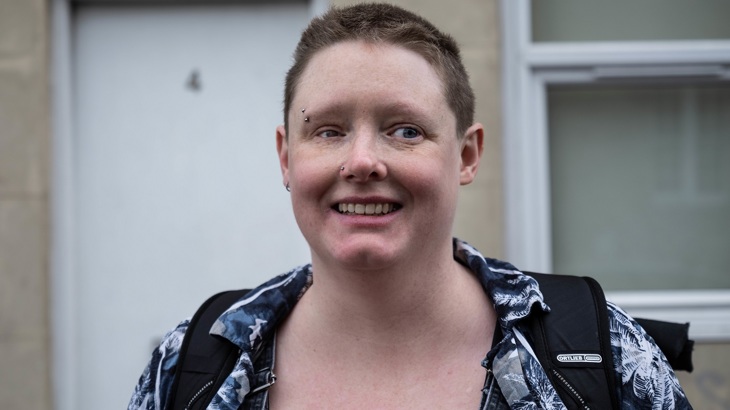
Annie's experiences were shared in the Walking and Cycling Index report. Credit: Brian Sweeney/Sustrans
Could you tell us about your experience of walking in the city – what are the barriers you come across?
I do come across some barriers in terms of being able to walk safely and confidently, especially because I'm visually impaired. The main one for me is shared-use spaces and pavements. Although I'm very comfortable navigating around a city and I'm used to being in busy places, if I'm sharing a space with cyclists particularly, that can be very challenging, as bikes are almost silent and quite hard to see.
So, I have to be aware of where other people are moving. If a bike appears from somewhere that I'm not expecting I am going to move suddenly and that's going to cause a problem for the cyclist. So, it ends up being my responsibility, which is probably unpredictable and confusing for the cyclist.
Narrow pavements are another challenge. That can force me to have to walk on the roads, particularly if somebody with a buggy or a wheelchair is coming towards me, I'm going to be the one that gets out the way, which is correct, but it forces me into the road where there's cars.
The other issue that I tend to run into a lot in Edinburgh unfortunately is just stuff on the pavement. You know, advertising boards, or chairs and tables. Even though I love sitting outside a cafe, chairs and tables can be a problem if they take up too much space. The worst one for me is cars parked on the pavement because then I have to walk sometimes out into the road. If people are parked sort of halfway on the pavement, I have to walk quite far out into the road, sometimes on the wrong side of the road. It just doesn't feel very safe at all.
Another barrier that I tend to come across particularly in my local area, but also in other bits of the city as well, is crossings that don't have dropped kerbs or have very uneven broken kerbs. When I'm just walking myself, it's not a huge problem but if I'm with a friend who's in a wheelchair, or if I'm pushing a buggy, it can really be a problem. I might be looking after my friend’s toddler, and we might have to cross where there's not actually a crossing because I can't get down or up the kerb in the right place. And then I am responsible for a child while being on the wrong side of the road, with my visual impairment and that doesn't seem ideal.
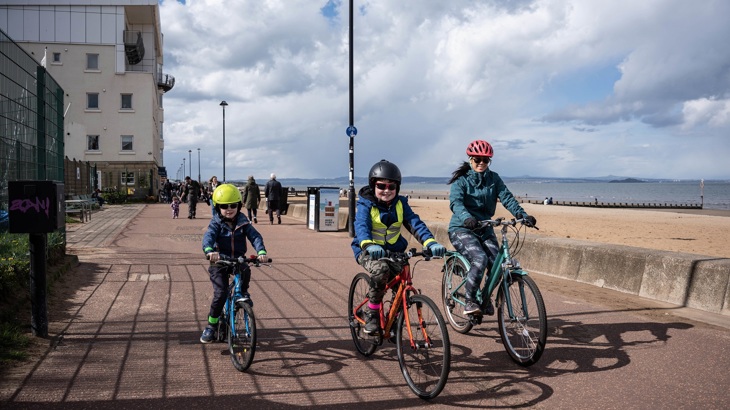
The Walking and Cycling Index is the biggest assessment of walking, wheeling and cycling in urban areas in the UK and Ireland. Credit: Brian Sweeney/Sustrans
What changes or improvements would make walking easier for you?
One major improvement that has been made since I've lived in Edinburgh is the junction at York Place. The separation of cyclists, pedestrians, and cars is helpful for me. For someone who's visually impaired, having to learn different rules, and a different layout for every kind of cyclist and pedestrian interaction is really challenging. It means that I can't necessarily always navigate those places fully independently the first time. So, it took me a couple of visits to figure everything out and learn it but once I did, I felt very safe.
I think walking would be significantly easier if we had slightly wider pavements, but I know that's a practical challenge in old cities. Pedestrianised high streets also be great. I do tend to struggle with the shared use paths we have in certain places in Edinburgh. So, for me, it's much, much safer if bikes and pedestrians and cars are completely separated.
I’d like to see dedicated cycling lanes like you might see in the Netherlands and Denmark. The reason for that is it means that I know exactly where I'm expecting non-pedestrian traffic to be. The other important thing for me is that people know and stick to the rules for cyclists and motorists. That would help the many people who are pedestrians who might not have full mobility. I do feel that in places, for example walking along the canal path, there is an expectation that pedestrians will be able to get out the way if needed and a lot of people just can't either because we can’t see or hear what’s going on or because people don't have the ability to move that quickly.
Because walking is one of the most basic free forms of transport and something that you can do at most fitness levels. It's important that it is kept accessible for everyone. Obviously, it's incredibly important to prioritize non-car travel for environmental reasons and that that's also very important because we need to have a future, but alongside that we shouldn't lose the fact that walking needs to be accessible to everybody, and we shouldn't be making that difficult for pedestrians, particularly older and disabled pedestrians.
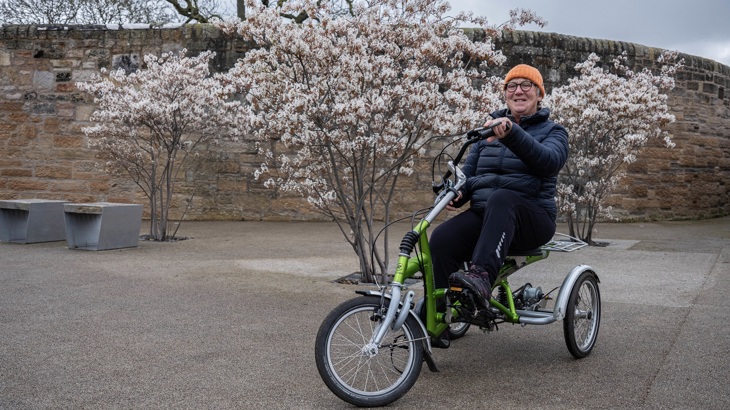
The Index reports every two years. Credit: Brian Sweeney/Sustrans





